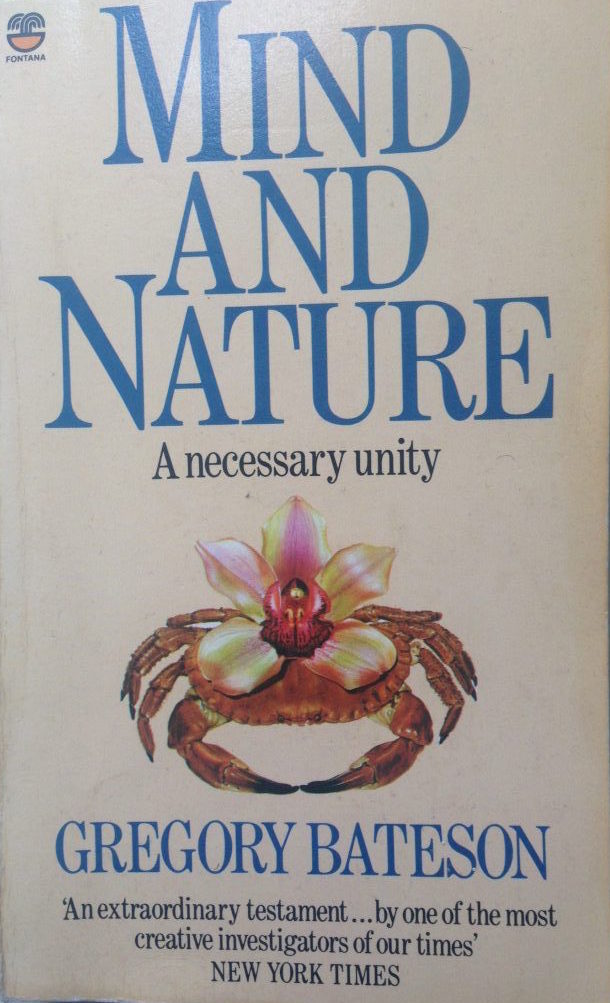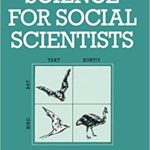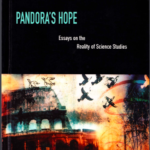
Os 6 critérios batesonianos para “processos mentais”
BATESON, Gregory. 1985. Criteria for mental process. In: Mind and nature: a necessary unity. New York: E.P. Dutton, pp.89-128. [1979]
PROCESSO MENTAL (pensamento, evolucão, ecologia, vida, aprendizado) = O TODO (e não as partes)
This chapter is an attempt to make a list of criteria such that if any aggregate of phenomena, any system, satisfies all the criteria listed, I shall unhesitatingly say that the aggregate is a mind and shall expect that, if I am to understand that aggregate, I shall need sorts of explanation different from those which would suffice to explain the characteristics of its smaller parts. (Bateson 1985:101)
I shall argue that the phenomena which we call thought, evolution, ecology, life, learning, and the like occur only in systems that satisfy these criteria. (Bateson 1985:102)
SÍNTESE
1. A mind is an aggregate of interacting parts or components.
2. The interaction between parts of mind is triggered by difference, and difference is a nonsubstantial phenomenon not located in space or time; difference is related to negentropy and entropy rather than to energy.
3. Mental process requires collateral energy.
4. Mental process requires circular (or more complex) chains of determination.
5. In mental process,the effects of difference are to be regarded as transforms (i.e., coded versions) of events which preceded them. The rules of such transformation must be comparatively stable (i.e., more stable than the content) but are themselves subject to transformation.
6. The description and classification of these processes of transformation disclose a hierarchy of logical types immanent in the phenomena. (Bateson 1985:101-2)
CRITÉRIO 1: A MENTE É UM AGREGADO DE PARTES-COMPONENTES EM INTERAÇÃO
[M]ental process is always a sequence of interactions between parts. (Bateson 1985:103)
The whole of the present book will be based on the premise that mental function is immanent in the interaction of differentiated ‘parts’. ‘Wholes’ are constituted by such combined interaction. (Bateson 1985:103)
[T]he theory of mind presented here is holistic and, like all serious holism, is premised upon the differentiation and interaction of parts. (Bateson 1985:104)
CRITÉRIO 2: A INTERAÇÃO ENTRE PARTES DA MENTE É DISPARADA POR DIFERENÇA (acontecimentos, eventos, mudanças…)
[F]or the material universe, we shall commonly be able to say that the ’cause’ of an event is some force or impact exerted upon some part of the material system by some one other part. One part acts upon another part. In contrast, in the world of ideas, it takes a relationship, either between two parts or between a part at time 1 and the same part at time 2, to activate some third component which we may call the receiver. (Bateson 1985:106)
It is surprising to find how rare are cases in the nonorganic world in which some A responds to a difference between some B and some C. (Bateson 1985:106)
The unchanging is imperceptible unless we are willing to move relative to it. (Bateson 1985:107)
We draw distinctions; that is, we pull them out. Those distinctions that remain undrawn are not. They are lost forever with the sound of the falling tree which Bishop Berkeley did not hear. (Bateson 1985:107-8)
Blake says […], ‘Wise men see outlines and therefore they draw them.’ He is using the word draw in a different sense from that in which we say we ‘draw’ distinctions, but he draws similar conclusions. Attneave has demonstrated that information (i.e., perceptible difference or distinction) is necessarily concentrated at outlines. See Frederick Attneave, Applications of Information Theory to Psychology (New York: Holt, Rinehart and Winston, 1959). (Bateson 1985:108, nota de rodapé)
[P]recisely because the mind can receive news only of difference, there is a difficulty in discriminating between a slow change and a state. There is necessarily a threshold of gradient below which gradient cannot be perceived. (Bateson 1985:109)
Information consists of differences that make a difference. (Bateson 1985:110)
We are discussing a world of meaning […]. A change in my neurons or in yours must represent that change in the forest, that falling of that tree. But not the physical event, only the idea of the physical event. And the idea has no location in space or time – only perhaps in an idea of space or time. (Bateson 1985:110)
[D]ifference is precisely not substance. (Bateson 1985:111)
[D]ifference, which is usually a ratio between similars, has no dimensions. It is qualitative, not quantitative. (Bateson 1985:111)
CRITÉRIO 3: PROCESSOS MENTAIS EXIGEM ENERGIA COLATERAL
Although it is clear that mental processes are triggered by difference (at the simplest level) and that difference is not energy and usually contains no energy, it remains necessary to discuss the energetics of mental process because processes, of whatever kind, require energy. (Bateson 1985:111)
To liken the mountain to a man and talk of its ‘humor’ or ‘rage’ does little harm. But to liken the man to the mountain proposes that all human relationships are what Martin Buber might call I-it or perhaps it-it relations. The mountain, personified in our speech, will not become a person, will not learn a more personal way of being. But the human being, depersonified in his own talk and thought, may indeed learn more thingish habits of action. (Bateson 1985:112)
Billiard-ball physics proposes that when ball A hits ball B, A gives energy to B, which responds using this energy which A gave it. That is the old syntax and is profoundly, deeply nonsense. Between billiard balls, there is, of course, no ‘hitting’ or ‘giving’ or ‘responding’ or ‘using.’ Those words come out of the habit of personifying things and, I suppose, make it easier to go from that nonsense to thingifying people – so that when we speak of the ‘response’ of a living thing to an ‘external stimulus’, we seem to be talking about something like what happens to a billiard ball when it is hit by another. (Bateson 1985:112-3)
When I kick a stone, I give energy to the stone, and it moves with that energy […]. When I kick a dog, it responds with energy got from metabolism. In the ‘control’ of action by information, the energy is already available in the respondent, in advance of the impact of events. (Bateson 1985:113)
The trick, which life plays continually but which undomesticated matter plays only rarely, is familiar. It is the trick of the faucet, the switch, the relay, the chain reaction, and so on […]. […] In all these cases, the energy for the response or effect was available in the respondent before the event occurred which triggered it. (Bateson 1985:113)
The kids who say they are ‘turned on’ by certain experiences of sight or sound are using a metaphor which almost makes sense. They would do better still if they said that the music or the pretty face ‘released’ them. (Bateson 1985:113)
In life and its affairs, there are typically two energetic systems in interdependence: One is the system that uses its energy to open or close the faucet or gate or relay; the other is the system whose energy ‘flows through’ the faucet or gate when it is open. The ON position of the switch is a pathway for the passage of energy which originates elsewhere. When I turn the faucet, my work in turning the faucet does not push or pull the flow of the water. That work is done by pumps or gravity whose force is set free by my opening the faucet. I, in ‘control’ of the faucet, am ‘permissive’ or ‘constraining’; the flow of the water is energized from other sources. I partly determine what pathways the water will take if it flows at all. Whether it flows is not my immediate business. […] The combining of the two systems (the machinery of decision and the source of energy) makes the total relationship into one of partial mobility on each side. You can take a horse to the water, but you cannot make him drink. The drinking is his business. But even if your horse is thirsty, he cannot drink unless you take him. The taking is your business. (Bateson 1985:113-4)
We have to combine that generalization [Critério 2: “that only difference can trigger response”] with what has just been said about the typical relation of energy sources [Critério 3] and with the remaining criteria of mental process, namely, the organization of triggered events into circuits [Critério 4], coding [Critério 5], and the genesis of hierarchies of meaning [Critério 6]. (Bateson 1985:114)
CRITÉRIO 4: PROCESSOS ENTAIS EXIGEM CADEIAS DE DETERMINAÇÃO CIRCULARES (OU MAIS COMPLEXAS)
Imagine a machine [Figura 8, p. 115] in which we distinguish, say, four parts, which I have loosely called ‘flywheel’, ‘governor’, ‘fuel’, and ‘cylinder’. In addition, the machine is connected to the outside world in two ways, ‘energy input’ and ‘load’, which is to be imagined as variable and perhaps weighing upon the flywheel. The machine is circular in the sense that flywheel drives governor which alters fuel supply which feeds cylinder which, in turn, drives flywheel. […] Because the system is circular, effects of events at any point in the circuit can be carried all around to produce changes at that point of origin. […] In such a diagram, arrows are used to indicate direction from cause to effect, and it is possible to imagine any combination of types of causation from step to step. The arrows may be supposed to represent mathematical functions or equations showing the types of effect that successive parts have on each other. Thus, the angle of the arms of the governor is to be expressed as a function of the angular velocity of the flywheel. And so on. […] In the simplest case, all the arrows represent either no gain or positive gain from part to part. In this case, the governor will be connected to the fuel supply in a way which no engineer would approve, namely, so that the more the arms ofthe governor diverge, the more the fuel. So rigged, the machine will go into a runaway, operating exponentially faster and faster, until either some part breaks or perhaps the fuel duct can deliver fuel at no greater rate. […] But the system might equally be set up with one or more inverse relations at arrow junctures. This is the usual way of setting up governors, and the name governor is applied to that part which provides the first half of such a relation. In this case, the more the arms diverge, the less the fuel supply. (Bateson 1985:116)
When we say that the system exhibits ‘steady state’ (i.e., that in spite of variation, it retains a median value), we are talking about the circuit as a whole, not about the variations within it. (Bateson 1985:120)
We do not notice that the concept ‘switch’ [which engineers at times call a gate or relay] is of quite a different order from the concepts ‘stone,’ ‘table,’ and the like. Closer examination shows that the switch, considered as a part of an electric circuit, does not exist when it is in the on position. From the point of view of the circuit, it is not different from the conducting wire which leads to it and the wire which leads away from it. It is merely ‘more conductor’. Conversely, but similarly, when the switch is off, it does not exist from the point of view of the circuit. It is nothing, a gap between two conductors which, themselves exist only as conductors when the switch is on. […] In other words, the switch is not except at the moments of its change of setting, and the concept ‘switch’ has thus a special relation to time. It is related to the notion ‘change’ rather than to the notion ‘object’. […] Sense organs […] are analogous to switches. They must be turned ‘on’ for a single moment by external impact. That single moment is the generating of a single impulse in the afferent nerve. The threshold (i. e., the amount of event required to throw the switch) is, of course, another matter and may be changed by many physiological circumstances, including the state of the neighboring end organs. (Bateson 1985:121)
CRITÉRIO 5: NOS PROCESSOS MENTAIS, OS EFEITOS DA DIFERENÇA DEVEM SER CONSIDERADOS COMO TRANSFORMAÇÕES (I.E., VERSÕES CODIFICADAS) DE EVENTOS QUE OS PRECEDERAM
[A]ny object, event, or difference in the so-called ‘outside world’ can become a source of information provided that it is incorporated into a circuit with an appropriate network of flexible material in which it can produce changes. (Bateson 1985:122)
[T]he map is not the territory. […] [W]e see the map as some sort of effect summating differences, organizing news of differences in the “territory.” Korzybski’s map […], his generalization asserts that the effect is not the cause. […] This […] is the primary premise of what we may call transformation or coding. […] This classification [of “the various sorts of relationship that can obtain between effect and cause”] will later embrace very complex cases when we encounter complex aggregates of information that may be called patterns, action sequences, and the like. (Bateson 1985:122-3)
[T]he first dichotomy that I wish to impose on the multitudinous varieties of transformation is that which would divide the cases in which response is graded according to some variable in the trigger event, as opposed to those in which the response is a matter of on-off thresholds. […] This is the dichotomy between analogic systems (those that vary continuously and in step with magnitudes in the trigger event) and digital systems (those that have the on-off characteristic). […] Notice that the digital systems more closely resemble systems containing number; whereas analogic systems seem to be dependent more on quantity. (Bateson 1985:123)
We live in a life in which our percepts are perhaps always the perception of parts, and our guesses about wholes are continually being verified or contradicted by the later presentation of other parts. It is perhaps so, that wholes can never be presented; for that would involve direct communication. (Bateson 1985:126-7)
CRITÉRIO 6: A DESCRIÇÃO E CLASSIFICAÇÃO DESSES PROCESSOS DE TRANSFORMAÇÃO REVELAM UMA HIERARQUIA DE TIPOS LÓGICOS IMANENTE NOS FENÔMENOS
[C]odes are conditional; that is, the meaning of a given type of action or sound changes relative to context, and especially relative to the changing state of the relationship between A and B. (Bateson 1985:128)
We start, then, with a potential differentiation between action in context and action or behavior which defines context or makes context intelligible. For a long time, I referred to the latter type of communication as metacommunication (Bateson 1985:129)
[T]he ancient paradox of Epimenides – ‘Epimenides was a Cretan who said, “Cretans always lie”’ – was built upon classification and metaclassification. I have presented the paradox here in the form of a quotation within a quotation, and this is precisely how the paradox is generated. The larger quotation becomes a classifier for the smaller, until the smaller quotation takes over and reclassifies the larger, to create contradiction. […] Norbert Wiener used to point out that if you present the Epimenides paradox to a computer, the answer will come out YES . . . NO . . . YES . . . NO . . . until the computer runs out of ink or energy or encounters some other ceiling. […] [L]ogic cannot model causal systems, and paradox is generated when time is ignored. (Bateson 1985:130)
[T]he human ‘understands’ the cat by putting the pieces together as if he really knew what is happening . He forms hypotheses, and these are continually checked or corrected by less ambiguous actions of the animal. […] Cross-species communication is always a sequence of contexts of learning in which each species is continually being corrected as to the nature of each previous context. (Bateson 1985:131)
Simple actions apparently respond to reinforcement applied according to the rules of operant conditioning. But ways of organizing simple actions, which in our descriptions of behavior we might call ‘guessing’, ‘discrimination’, ‘play’, ‘exploration’, ‘dependency’, ‘crime’, and the like, are of different logical type and do not obey the simple reinforcement rules. (Bateson 1985:135)
[T]he step from one logical type to the next higher is a step from information about an event to information about a class of events or from considering the class to considering the class of classes. (Bateson 1985:137)
[T]he ‘purpose’ of exploration is, not to discover whether exploration is a good thing, but to discover information about the explored. The larger case is of a totally different nature from that of the particular. (Bateson 1985:138)
It is interesting to consider the nature of such a concept as ‘crime’. We act as if crime could be extinguished by punishing parts of what we regard as criminal actions, as if ‘crime’ were the name of a sort of action or of part of a sort of action. More correctly ‘crime’, like ‘exploration’, is the name of a way of organizing actions. It is therefore unlikely that punishing the act will extinguish the crime. […] [T]here is a very profound difference between a serious attempt to change the characterological state of an organism and trying to change that organism’s particular actions. The latter is relatively easy; the former, profoundly difficult. Paradigmatic change is as difficult as – indeed is of the same nature as – change in epistemology. (Bateson 1985:138-9)
What is characteristic of ‘play’ is that this is a name for contexts in which the constituent acts have a different sort of relevance and organization from that which they would have had in non-play. It may even be that the essence of play lies in a partial denial of the meanings that the actions would have had in other situations. (Bateson 1985:139)
If the buzzer circuit is closed, then the armature is attracted by the electromagnet. If the armature moves, attracted by the electromagnet, the attraction ceases, and the armarure is then not attracted. This cycle of if . . . then relations in the world of cause is disruptive of any cycle of if . . . then relations in the world of logic unless time is introduced into logic. The disruption is formally similar to the paradox of Epimenides. (Bateson 1985:140)
AUTONOMY
Autonomy – literally control of the self, from the Greek autos (self) and nomos (a law) – is provided by the recursive structure of the system. Whether or not a simple machine with a governor can control or be controlled by itself may be disputed, but imagine more loops of information and effect added on top of the simple circuit. What will be the content of the signal material carried by these loops? The answer, of course, is that these loops will carry messages about the behavior of the whole system. In a sense, the original simple circuit already contained such information (‘it’s going too fast’; ‘it’s going too slow’), but the next level will carry such information as ‘the correction of “it’s going too fast” is not fast enough’, or ‘the correction of “it’s going too fast” is excessive’. That is, the messages become messages about the previous lower level. From this to autonomy is a very shoft step. (Bateson 1985:141)
MIND
[T]he sort of system that I call mind is capable of purpose and choice by way of its self-corrective possibilities. It is capable of either steady state or runaway or some mixture of these. It is influenced by ‘maps’, never by territory, and is therefore limited by the generalization that its receipt of information will never prove anything about the world or about itself. […] Beyond this, the system will learn and remember, it will build up negentropy, and it will do so by the playing of stochastic games called empiricism or trial and error. It will store energy. It will inevitably be characterized by the fact that all messages are of some logical type or other, and so it will be dogged by the possibilities of error in logical typing . Finally, the system will be capable of uniting with other similar systems to make still larger wholes. (Bateson 1985:142)





 O LaSPA é sediado no Instituto de Filosofia e Ciências Humanas (
O LaSPA é sediado no Instituto de Filosofia e Ciências Humanas (